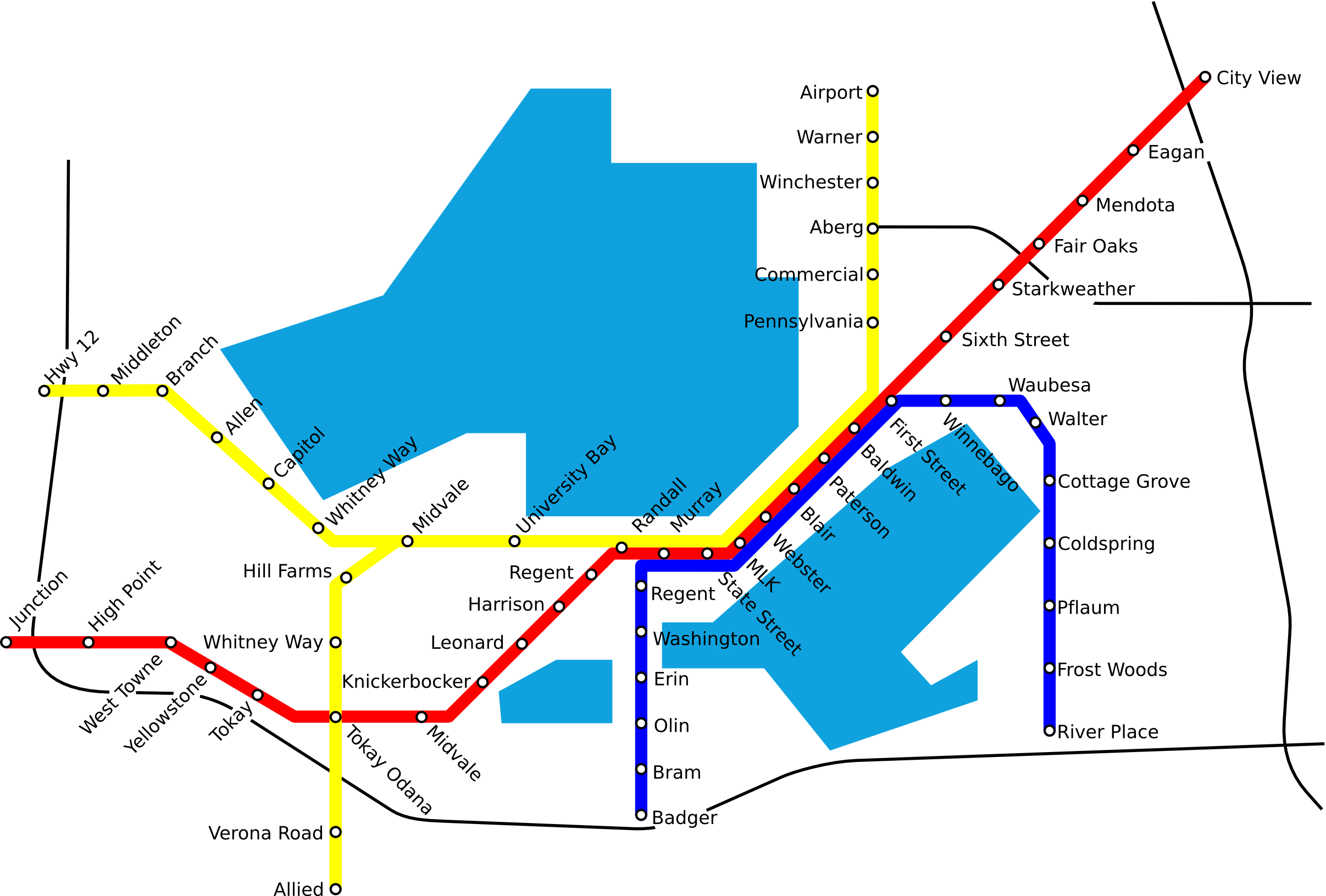The Metro Mover (PDF)
The Madison Area needs Rapid Buses. We call our vision the M or Metro Mover. The region is too large to be served adequately by only one type of bus. Existing buses are important, but there also needs to be a way for transit to connect places outside the center in a reasonable period of time. Despite its lakes and isthmus, the City of Madison has clearly defined corridors for good rapid transit. Below is the beginning of a simple schema, the idea being that a pedestrian on East Washington Avenue should be able to easily get to Monona Drive, Park Street, University Avenue, Mineral Point Road, or State Street quickly and comfortably without a car. The alternative is deep, plentiful, and expensive roads and parking garages.

Why Rapid Buses?
In the Madison Area, express or rapid buses give us the most service for our money given our relatively small size. 10 to 15 minute service is really the minimum frequency for a bus, as longer headways mean people need to plan their trips with schedules. Most people are reluctant to do that. Features that can make buses especially RAPID include signal preemption, limited stops, special lanes along part of the line, and level boarding. In time, ridership could grow and potentially justify an upgrade to rail.
Although the map emphasizes the City of Madison and areas of possible Transit Oriented Infill, the M also has the potential to provide green transportation to Madison’s surrounding communities. The Red Line could be extended to Sun Prairie and Verona; the Blue Line to Fitchburg, McFarland, and Stoughton, and the yellow Line to Middleton and Waunakee.
Many American cities have or are planning express or rapid bus lines. They are not the usual bus lines. They are a high capacity transit mode designed to be competitive with driving. Imaging is important, and while vehicles could be standard 40’ diesel buses, they could also be articulated buses, electric trolleybuses, CNG powered buses, hybrid electric buses, or some combination of these. The rapid bus system could interface with other transit lines at various locations, making transit a convincing choice for a significant fraction of the population.
Investment in transit has the potential to provide green jobs and to reduce traffic congestion on Madison’s arterials. The goal is for transit to become a popular, convenient and economical way to travel.